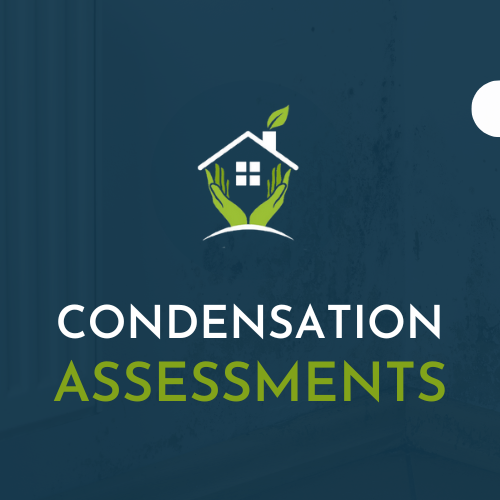What is Damp?
Damp is the presence of excess moisture in a building, which can lead to a range of problems such as mould growth, structural damage, and health issues. There are three main types of damp: rising damp, penetrating damp, and condensation. Rising damp occurs when moisture from the ground rises up through the walls, while penetrating damp is caused by water entering the building through leaks or cracks. Condensation is the most common type of damp and is caused by excess moisture in the air.Can Damp be Caused by Condensation?
Condensation is the process by which water vapour in the air turns into liquid when it comes into contact with a cold surface. This can cause damp if it occurs on walls, windows, or other surfaces in the home. To prevent damp caused by condensation, it's important to maintain good ventilation and keep the home at a consistent temperature. This can be achieved by opening windows regularly, using extractor fans in bathrooms and kitchens, and ensuring that heating systems are working properly.How Does Moisture Lead to Mould?
Mould is a type of fungus that grows in damp conditions. It can cause a range of health problems, including respiratory issues, allergies, and asthma. Moisture is the main cause of mould growth, as it provides the ideal environment for spores to thrive. To prevent mould growth, it's important to keep the home dry and well-ventilated. This can be achieved by fixing any leaks or damp problems, using a dehumidifier, and ensuring that the home is properly insulated.Why is Ventilation Important?
Ventilation is the process of exchanging air between the inside and outside of a building. It's important for maintaining good air quality and preventing damp and condensation. Good ventilation helps to remove excess moisture from the air, which can reduce the risk of damp and mould growth. There are several types of ventilation, including natural ventilation, mechanical ventilation, and passive ventilation. Each type has its own benefits and drawbacks, so it's important to choose the right one for your home.How Does Humidity Affect Damp and Condensation?
Humidity is the amount of moisture in the air. High humidity levels can lead to damp and condensation, as the excess moisture in the air can settle on surfaces and cause damage. To control humidity levels, it's important to maintain good ventilation and keep the home at a consistent temperature. This can be achieved by using a dehumidifier, opening windows regularly, and ensuring that heating systems are working properly.What is Insulation and How Does it Help?
Insulation is the process of adding a layer of material to a building to reduce heat loss and improve energy efficiency. It can also help to prevent damp and condensation by reducing the risk of cold surfaces in the home. There are several types of insulation, including cavity wall insulation, loft insulation, and solid wall insulation. Each type has its own benefits and drawbacks, so it's important to choose the right one for your home.Can a Dehumidifier Help Prevent Damp and Condensation?
A dehumidifier is a device that removes excess moisture from the air. It works by drawing in humid air and passing it over a cold surface, which causes the moisture to condense and collect in a container. Dehumidifiers can be useful for preventing damp and condensation in areas of the home that are prone to moisture, such as bathrooms and kitchens. However, they should not be relied on as the sole solution to damp problems.Why is Air Flow Important?
Air flow is the movement of air through a building. It's important for maintaining good air quality and preventing damp and condensation. Good air flow helps to remove excess moisture from the air, which can reduce the risk of damp and mould growth. Improving air flow in your home can be achieved by opening windows regularly, using extractor fans in bathrooms and kitchens, and ensuring that heating systems are working properly.How Can Waterproofing Help Prevent Damp and Condensation?
Waterproofing is the process of making a building resistant to water penetration. It can help to prevent damp and condensation by reducing the risk of water entering the building through leaks or cracks. There are several types of waterproofing, including damp proofing, tanking, and cavity drain systems. Each type has its own benefits and drawbacks, so it's important to choose the right one for your home.
At Assured Eco Systems, we offer a range of solutions for preventing damp and condensation in your home. From ventilation systems to insulation and waterproofing, we can help you to create a dry, healthy living environment. Contact us today to find out more about our services and how we can help you.


